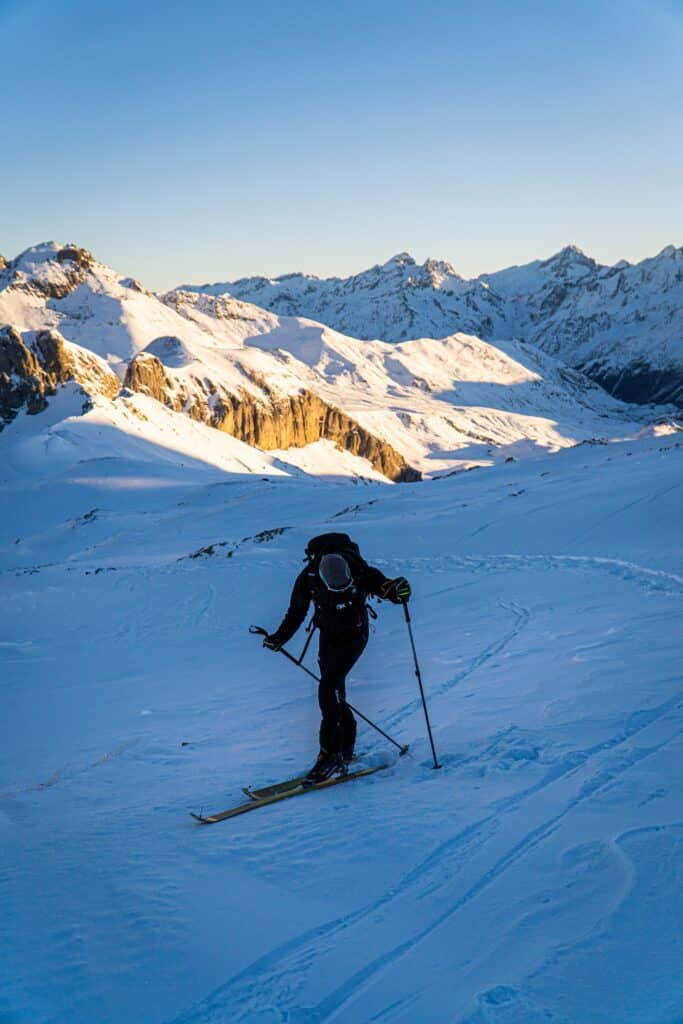If you’re an adventure enthusiast seeking an adrenaline-packed getaway, look no further than Guanacaste, a picturesque region in Costa Rica known for its stunning landscapes and thrilling outdoor activities. In this article, we will take you on a virtual journey through the best mountain biking trails in Guanacaste, showcasing the breathtaking natural beauty, challenging terrains, and unforgettable experiences that await you. So grab your helmet and get ready for an exhilarating ride through Guanacaste’s mountain paradise.

Guanacaste At A Glance
Location and landscape
Guanacaste is located in the northwestern part of Costa Rica, bordering the Pacific Ocean. It is known for its stunning natural beauty and diverse landscapes. From pristine beaches and lush rainforests to towering mountains and active volcanoes, Guanacaste offers a wide range of terrains for outdoor enthusiasts to explore.
Climate and best time to visit
Guanacaste enjoys a tropical climate with two distinct seasons – the dry season (December to April) and the rainy season (May to November). The dry season is the most popular time to visit, as the weather is sunny and ideal for outdoor activities like mountain biking. However, the rainy season has its own charm, with lush greenery and fewer crowds.
Importance for mountain biking
Guanacaste is a paradise for mountain biking enthusiasts. Its diverse landscapes, challenging trails, and breathtaking scenery make it a top destination for riders of all skill levels. With its vast network of trails, Guanacaste offers a variety of experiences, from adrenaline-pumping downhill rides to scenic cross-country routes. Whether you’re a beginner or an experienced rider, Guanacaste has something to offer for everyone.
Preparation For A Mountain Biking Day Trip
Necessary equipment
Before embarking on a mountain biking day trip in Guanacaste, it is important to have the right equipment. This includes a well-maintained mountain bike suitable for the terrain, a helmet, gloves, and proper cycling shoes. It is also advisable to carry a repair kit, spare tubes, a pump, and plenty of water to stay hydrated throughout the ride.
Safety measures
Mountain biking can be an exhilarating yet challenging activity, so it is crucial to prioritize safety. Always wear a helmet and protective gear to minimize the risk of injury. Familiarize yourself with the trail difficulty levels and choose routes that match your skill and fitness level. Additionally, inform someone about your planned route and expected return time for added safety.
Local guide necessity
While some riders may prefer to explore on their own, hiring a local guide can greatly enhance the mountain biking experience in Guanacaste. Local guides have extensive knowledge about the trails, terrain, and safety precautions. They can also provide valuable insights into the flora, fauna, and cultural significance of the area. Choosing a guide who is familiar with the region will ensure a memorable and enjoyable ride.

Rincon de la Vieja National Park
General overview
Rincon de la Vieja National Park, located in the Guanacaste province, is a must-visit destination for mountain biking enthusiasts. The park is named after the active Rincon de la Vieja Volcano and covers an area of over 34,000 acres. It boasts a unique combination of volcanic landscapes, dense forests, and stunning waterfalls.
Trail options and difficulty levels
Rincon de la Vieja offers a range of trails that cater to different skill levels. From easy, family-friendly rides to more technical and challenging routes, there is something for everyone. The Las Pailas loop trail is a popular choice for beginners, while the Santa Maria trail offers a more advanced experience with steep ascents and descents.
Flora and fauna sightings
Exploring Rincon de la Vieja on a mountain bike allows riders to immerse themselves in the park’s diverse flora and fauna. Keep an eye out for Howler monkeys, coatis, and various bird species as you ride along the trails. The park is also home to numerous hot springs and mud pots, which add to its unique volcanic charm.
Tips for biking in Rincon de la Vieja
When biking in Rincon de la Vieja, it is important to respect the park’s rules and regulations. Stay on designated trails to avoid damaging the fragile ecosystem. Carry plenty of water and snacks to stay nourished throughout the ride, and be prepared for changing weather conditions, as the park is known for sudden rainfall. Lastly, take your time to appreciate the park’s natural beauty and tranquility.
Arenal Volcano National Park
General overview
Arenal Volcano National Park is a prime destination for outdoor enthusiasts, offering stunning views of the majestic Arenal Volcano and a wide array of activities. The park is located in the northern part of Costa Rica and is characterized by its lush rainforests, hot springs, and diverse wildlife.
Trail maps and difficulty levels
Arenal Volcano National Park offers several well-marked trails suitable for mountain biking. The park provides detailed trail maps indicating the difficulty levels and length of each route. From leisurely rides through the rainforest to more challenging ascents near the volcano, riders can tailor their experience to their skill and fitness level.
Viewpoints and scenery
One of the highlights of mountain biking in Arenal Volcano National Park is the opportunity to enjoy breathtaking viewpoints and scenery. As you pedal through the trails, take a moment to pause and marvel at the panoramic vistas of the volcano, Lake Arenal, and the surrounding rainforest. Capture these unforgettable moments with your camera to cherish the memories forever.
Tips for biking in Arenal Volcano
To make the most of your mountain biking adventure in Arenal Volcano National Park, it is recommended to start early in the day to avoid crowds and to take advantage of cooler temperatures. Bring insect repellent and sunscreen, as the park is home to various insects and the sun can be intense. Additionally, be mindful of potential wildlife encounters and adhere to park regulations to protect the natural environment.

Monteverde Cloud Forest Reserve
Background information
Nestled in the heart of the Tilarán Mountain Range, the Monteverde Cloud Forest Reserve is a mist-covered paradise renowned for its extraordinary biodiversity. The reserve is characterized by its unique cloud forest ecosystem, which creates a surreal and enchanting atmosphere for mountain bikers.
Trail options and their features
Monteverde Cloud Forest Reserve offers an extensive network of well-maintained trails, catering to riders of all abilities. Choose from gentle and scenic paths for beginners or adrenaline-pumping descents for more experienced riders. The trails wind through dense fog, revealing towering trees, colorful orchids, and a myriad of bird species along the way.
Unique experiences in Monteverde
Mountain biking in Monteverde Cloud Forest Reserve provides riders with the opportunity to witness the incredible diversity of plant and animal life. Don’t miss the chance to spot the elusive Resplendent Quetzal, a vibrant bird species often considered a symbol of the cloud forest. Immerse yourself in the unique ecosystem and listen to the sounds of nature as you navigate the trails.
Mountain biking considerations in Monteverde
Given the cloud forest’s damp and misty conditions, it is crucial to come prepared for the weather. Wear waterproof clothing and consider bringing a spare set of clothes for after the ride. The trails can be slippery, so exercise caution and adjust your speed accordingly. Respect the reserve’s regulations and avoid disturbing the fragile flora and fauna that call Monteverde home.
Barra Honda National Park
Brief introduction
Barra Honda National Park, located in the Nicoya Peninsula, is a hidden gem for mountain bikers seeking an off-the-beaten-path experience. The park is renowned for its impressive limestone caves, stunning coastal views, and a network of trails that wind through the park’s rugged terrain.
Selecting suitable trails
Barra Honda National Park offers a range of trails suitable for different skill levels. Beginners may enjoy the Los Clósets trail, a gentle path that showcases the park’s unique rock formations and vegetation. More experienced riders can opt for the El Indio trail, which features challenging climbs and exciting descents through dense forests.
Wildlife encounters
Exploring Barra Honda on a mountain bike opens up opportunities to encounter a variety of wildlife. Keep your eyes peeled for white-faced monkeys, anteaters, and even jaguars, although sightings of the latter are extremely rare. Birdwatching enthusiasts will be thrilled by the diverse avian species that call Barra Honda home.
Mountain biking guidelines for Barra Honda
When mountain biking in Barra Honda National Park, it is essential to follow the park’s guidelines and regulations. Respect the natural environment by refraining from littering and staying on designated trails. Due to the park’s challenging terrain, it is advisable to ride with caution and be prepared for possible encounters with wildlife. As always, carry water, snacks, and any necessary equipment for a safe and enjoyable ride.
Santa Rosa National Park
Park description
Santa Rosa National Park, the oldest national park in Costa Rica, offers a unique blend of historical significance and natural beauty. Located on the Pacific coast of Guanacaste, the park encompasses diverse ecosystems, including dry tropical forests, beautiful beaches, and important archaeological sites.
Recommended trails for mountain biking
Santa Rosa National Park is a paradise for mountain bikers, with a variety of trails to suit different preferences and abilities. The Sendero del Mirador trail offers a moderate ride with panoramic views of the coastline, while the Sendero Bosque Seco provides a more challenging experience through the dry forest.
Sights and attractions
In addition to its excellent mountain biking opportunities, Santa Rosa National Park boasts fascinating historical sites. Don’t miss the Casona, a beautifully preserved farmhouse that was the site of the 1856 Battle of Santa Rosa. Explore the pristine beaches, such as Playa Naranjo and Playa Nancite, which serve as nesting grounds for Olive Ridley sea turtles.
Tips for biking in Santa Rosa
When biking in Santa Rosa National Park, be sure to bring sunscreen, as the park’s dry climate can intensify the sun’s rays. Stay hydrated by packing enough water and snacks, especially during hot and sunny days. Keep an eye out for wildlife, including howler monkeys and coatimundis, as you traverse the park’s picturesque trails. Remember to leave no trace and respect the park’s fragile ecosystems.
The Nicoya Peninsula
Geographical orientation
The Nicoya Peninsula is located in the northwest region of Costa Rica and is known for its laid-back charm, stunning beaches, and abundant wildlife. It is easily accessible from Guanacaste and offers a range of mountain biking opportunities.
Choosing trails in Nicoya Peninsula
The Nicoya Peninsula offers a variety of trails that showcase its natural beauty and diverse landscapes. From coastal paths with sweeping ocean views to inland routes through lush forests, riders can tailor their biking experience to their preferences. Consider exploring the coastal town of Malpais and its surrounding trails for a memorable ride.
Landmark sightings
As you explore the Nicoya Peninsula on your mountain bike, keep an eye out for iconic landmarks such as the iconic Cabo Blanco Nature Reserve, Costa Rica’s first protected area. The reserve is home to a plethora of wildlife, including white-faced monkeys, coatis, and various bird species. Don’t forget your camera to capture the breathtaking views and memorable moments.
Mountain biking tips for Nicoya Peninsula
When mountain biking on the Nicoya Peninsula, be sure to check weather conditions and plan your ride accordingly. The region experiences hot temperatures, so carry ample water to stay hydrated throughout the journey. Apply sunscreen to protect your skin from the sun’s rays and wear appropriate clothing for the tropical climate. Lastly, observe responsible trail etiquette and respect the Peninsula’s natural beauty and fragile ecosystems.
The Osa Peninsula and Corcovado National Park
General overview
The Osa Peninsula, located in southern Costa Rica, is a pristine and biologically diverse region. At its heart lies Corcovado National Park, often hailed as one of the most biodiverse places on Earth. Mountain biking in this remote wilderness is an unforgettable experience for adventure seekers.
Trail options and difficulty
Corcovado National Park offers limited mountain biking opportunities due to its protected status and dense rainforest. However, the Osa Peninsula itself presents several trails that allow riders to immerse themselves in its natural beauty. The Carate to Puerto Jimenez trail is a notable choice, featuring stunning coastal views and encounters with wildlife along the way.
Flora, fauna, and vista points
Exploring the Osa Peninsula and Corcovado National Park on a mountain bike offers the chance to witness the incredible diversity of flora and fauna unique to this region. Encounter scarlet macaws, tapirs, and spider monkeys as you ride through the lush rainforest. Take breaks at scenic vista points to soak in the breathtaking landscapes and listen to the symphony of wildlife.
Mountain biking considerations in Corcovado
When biking in the Osa Peninsula, it is essential to understand and respect the park’s regulations. Due to its fragile ecosystem, mountain biking is restricted in Corcovado National Park. However, riders can still appreciate the Osa Peninsula’s natural wonders by exploring the available trails outside the park boundaries. Be mindful of wildlife encounters, carry necessary supplies, and leave no trace to preserve the beauty of this remarkable region.
Conclusion: Embracing The Gifts Of Guanacaste
Reflecting on the biking experience
Embarking on mountain biking adventures in Guanacaste provides an unparalleled opportunity to connect with nature and experience the region’s stunning landscapes. Whether you choose to ride through the misty cloud forests of Monteverde, explore the rugged trails of Barra Honda, or witness the rich biodiversity of Rincon de la Vieja, each biking experience in Guanacaste is filled with excitement and adventure.
The impact of Guanacaste’s biodiversity
Guanacaste’s biodiversity is truly extraordinary, and mountain biking allows visitors to appreciate and understand its significance. By exploring these pristine natural areas, riders develop a deeper appreciation for the ecosystems and the need to protect them. Responsible mountain biking practices, such as sticking to designated trails and respecting wildlife, help preserve Guanacaste’s unique biodiversity for future generations to enjoy.
Encouraging sustainable tourism practices
As the popularity of mountain biking in Guanacaste continues to grow, it is crucial to prioritize sustainable tourism practices. By choosing local guides, respecting park regulations, and minimizing our environmental impact, we can ensure the long-term preservation of Guanacaste’s natural beauty. Let us embrace the gifts of Guanacaste and promote a sustainable future for this magnificent region.







0 Comments